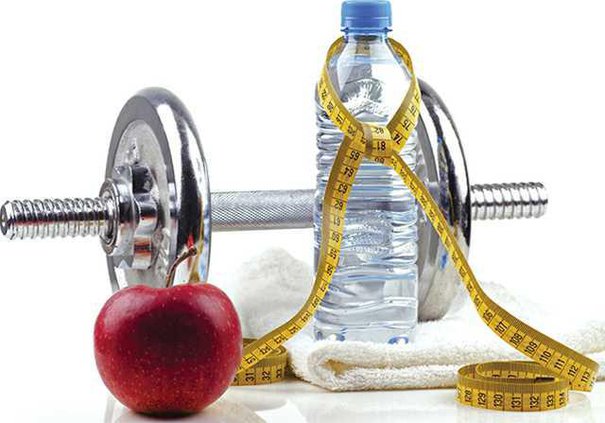Understanding cholesterol and how your body breaks down these components will help you make better decisions regarding your dietary intake of certain foods. Knowing the difference between good and bad cholesterol leads to a better understanding of your overall health.
What exactly is cholesterol?
The most basic explanation is that cholesterol is a chemical compound your body needs to help build and repair cells and build hormones such as estrogen and testosterone. According to MedicineNet.com, the liver produces 80 percent of the body’s cholesterol, while the remainder comes from animal, fish, and dairy foods. Plant-based foods have no cholesterol.
The liver regulates the cholesterol contained in the body’s blood stream, absorbing and metabolizing the compound from the small intestines. The liver will store the cholesterol, secreting it to the body as needed.
Cholesterol is carried through the blood stream by a protein carrier called a lipoprotein. In terms of health, there are two main types of lipoproteins used to describe what is commonly referred to as “good” and “bad” cholesterol.
MedicineNet.com, the American Heart Association, the Mayo Clinic, the Cleveland Clinic and numerous medical journals describe “good cholesterol” as high-density lipoproteins, or HDL.
“Bad cholesterol” refers to low-density lipoproteins, or LDL.
On its own, a high cholesterol level in the body doesn’t automatically increase the risk of disease. During an annual physical, a simple blood test can detect whether one’s cholesterol levels are too high, below normal or in the normal range.
Blood tests measure cholesterol in milligrams per deciliter (mg/dl) of blood. The results are usually broken down into three result components. The first is the overall cholesterol level.
The second shows HDL level, and the third the LDL level.
A desirable range for overall cholesterol is a number less than 200 mg/dl. Borderline high risk is between 200 and 239 mg/dl, and high cholesterol is 240 and greater.
Results showing a high level of LDL and a low level of HDL could indicate danger ahead.
Having a high level of LDL can be bad for the body because it can build up, creating plague along the inside walls of the arteries, causing them to narrow. Long-term buildup can completely block an artery and cause significant damage, increasing the risk for heart disease, stroke or peripheral artery disease.
An LDL level less than 100mg/dl is optimal. LDL levels ranging between 100 and 129mg/dl are in the near optimal to above optimal range. Borderline high is the range between 130-159 mg/dl, and near high ranges from 160-189 mg/dl. An LDL level greater than 190 mg/dl is high risk.
Having a higher level of HDL is better because the function of HDL is to help carry away the LDL that accumulates in the bloodstream.
An HDL level of less than 40mg/dl for men or less than 50 mg/dl for women indicates a risk of disease. An HDL of 60 mg/dl or greater is enough to help protect the body from the risk of heart disease and stroke.
Diet and genetics both play a factor in a person’s cholesterol levels. Genetically, the liver is responsible for managing the levels of LDL through receptors in liver cells. Genetic conditions affecting these receptors may pre-dispose someone to having a higher LDL level.
In the diet, cholesterol comes from the saturated fats from animal meat consumed, as well as eggs, dairy products and certain vegetable oils. Excess consumption of foods high in saturated fat can lead to elevated levels of LDL.
Knowing this, people who have elevated levels of LDL can help reduce their risk of disease by lowering their LDL levels. Oftentimes this can be accomplished with small changes to their diets. The American Heart Association recommends limiting total fat intake to less than 25 percent to 35 percent of total calories consumed each day. Saturated fats should be limited to 7 percent of total daily calories.
Often, when measures are taken to lower the LDL level, the HDL level increases as a result.
The Mayo Clinic reported that lifestyle has the biggest impact on the HDL level, and even the slightest change to daily habits can help increase the body’s HDL level.
Some lifestyle changes may seem obvious, but not so easy. If you are a smoker, quit. Quitting can increase HDL by as much as 10 percent. Losing weight is another option. The Mayo Clinic reported that for every six pounds lost, HDL may increase by 1 mg/dl.
Tying into losing weight is being more physically active. The Mayo Clinic reported that the best bet for increasing HDL cholesterol is to exercise briskly for 30 minutes five times a week. Their examples of brisk aerobic exercise include walking, running, cycling, swimming, playing basketball and raking leaves — anything that increases the heart rate.
Select healthier fat options. Avoid foods that contain saturated and trans fats, which raise LDL cholesterol and damage the blood vessels. Instead, opt for monounsaturated and polyunsaturated fats — found in olive, peanut and canola oils — which tend to improve HDL’s anti-inflammatory abilities. Nuts, fish and other foods containing omega-3 fatty acids are other good choices for improving one’s HDL cholesterol ratio.
Other foods known to have a healthy effect on blood cholesterol levels are whole grains such as oatmeal, oat bran and whole-wheat products, walnuts, almonds and Brazil nuts, flaxseed and flaxseed oils.
The first step is checking with your primary care physician and requesting a cholesterol blood screen. It is often covered 100 percent by medical insurance as part of an annual physical and preventative measure of health. Your physician can discuss the results with you to determine if simple lifestyle changes would be sufficient in improving your cholesterol profile or whether medication is a necessity to improve your overall health.
Cholesterol explained


Sign up for our e-newsletters